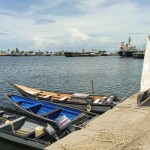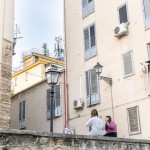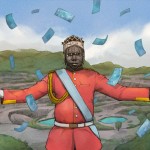Perched on a pile of wooden planks on the banks of the Itaquai River in the Amazon’s Javari Valley, Dom Phillips sits listening attentively. Next to him, an illegal fisherman from the area talks with animation, gesturing to something outside the frame of the picture.
The photograph is one of the last ever taken of Phillips, an environmental journalist who was in the valley researching a book about how to save the Amazon rainforest. Two days after it was taken, he and Bruno Pereira, an expert on Brazil’s indigenous peoples, were gunned down while out on the river.
Five men have reportedly been charged over the murders in two separate cases. According to the indictments, they allegedly belonged to the same illegal fishing gang as the man pictured with Phillips, who goes by “Caboclo.” (Reporters couldn’t reach him for comment.)
The picture, taken from one of Pereira’s phones, was almost buried in the heart of Brazil’s Amazon forever.
His colleagues from a patrol within the Union of Indigenous Peoples of the Javari Valley (Univaja) found the phone four months after his death when they were scouring the area for clues with a metal detector. The device, which was buried under a pile of mud and sticks, was so badly damaged it took months to extract the data.
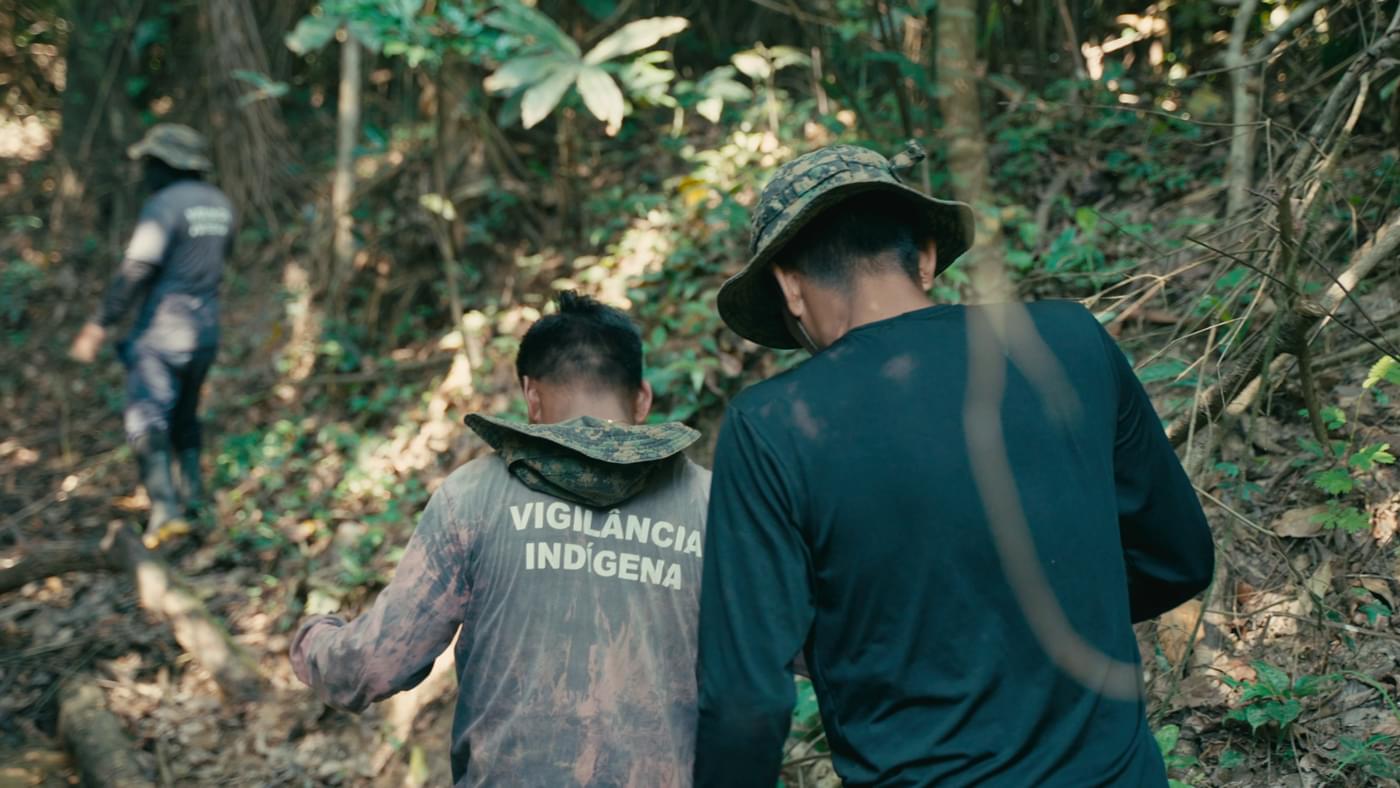 The surveillance team of the Univaja searching for evidence after the murders. (Photo: TV Globo/Globoplay)
The surveillance team of the Univaja searching for evidence after the murders. (Photo: TV Globo/Globoplay)
“The phone spent months in the water before the river levels went down,” said Sônia Bridi, a journalist who was there at the time making a documentary about the killings for Brazilian streaming platform Globoplay.
The phone was turned over to police, who used pictures and metadata extracted from the handset to reconstruct the last moments of Phillips and Pereira’s lives.
The photographs were also entrusted to the “Bruno and Dom Project,” a collaborative investigation led by French nonprofit Forbidden Stories. More than 50 reporters have continued Pereira and Phillips’ investigations into the destruction of the Amazon, from land grabbing, and ranching’s ties to deforestation, to illegal mining and illegal fishing.
Last year police arrested three fishermen who are accused of killing the two men, though their trial is yet to begin. Their lawyer denied they had committed murder, saying Pereira had opened fire first.
Over the weekend, reports emerged that two other men had been charged in the second case, including the alleged mastermind of the killings, Ruben Dario da Silva Villar. Also known as “Colômbia,” he is accused of being the leader of the illegal fishing gang that killed Phillips and Pereira. His lawyer did not reply to requests for comment.
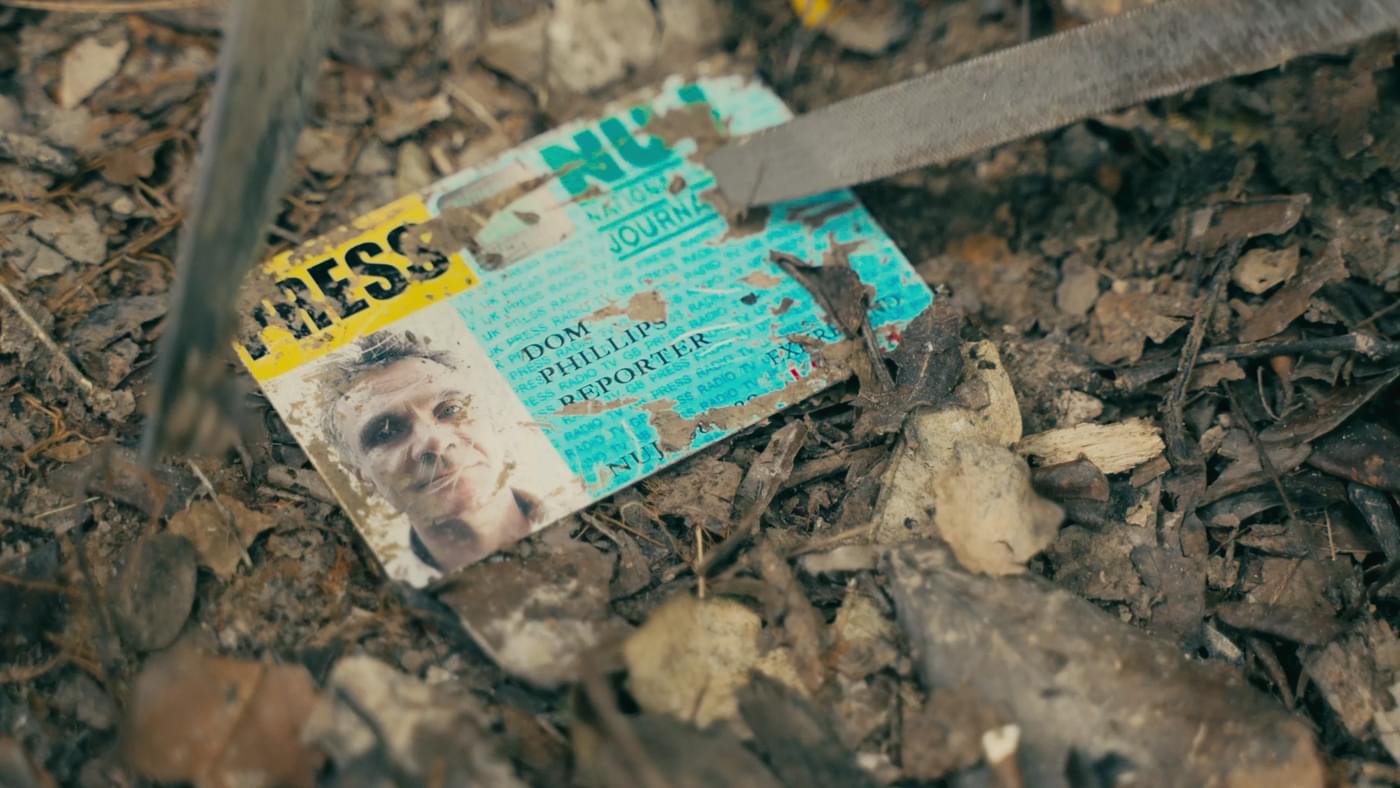 Dom Phillips' press card, found by the Univaja surveillance team nearly four months after his death. (Photo: TV Globo/Globoplay)
Dom Phillips' press card, found by the Univaja surveillance team nearly four months after his death. (Photo: TV Globo/Globoplay)
Alessandra Sampaio, Phillips' widow, said holding the killers to account would send a powerful message that the organized crime groups destroying the Amazon can’t operate with impunity.
“I want justice, but not for myself: for the protection of the Javari Valley and the Amazon,” she said.
A Deadly Encounter
It was in the Javari Valley — a region as big as Austria on Brazil’s western border that is home to the greatest concentration of indigenous people in the country — that Phillips and Pereira first met in 2018.
Pereira worked for the government to coordinate relations with isolated Amazon tribes, including those who only recently came into contact with the outside world, and he knew the area intimately. The two men stayed in touch after the trip, and Pereira agreed to guide Phillips when he returned to the Javari Valley last year.
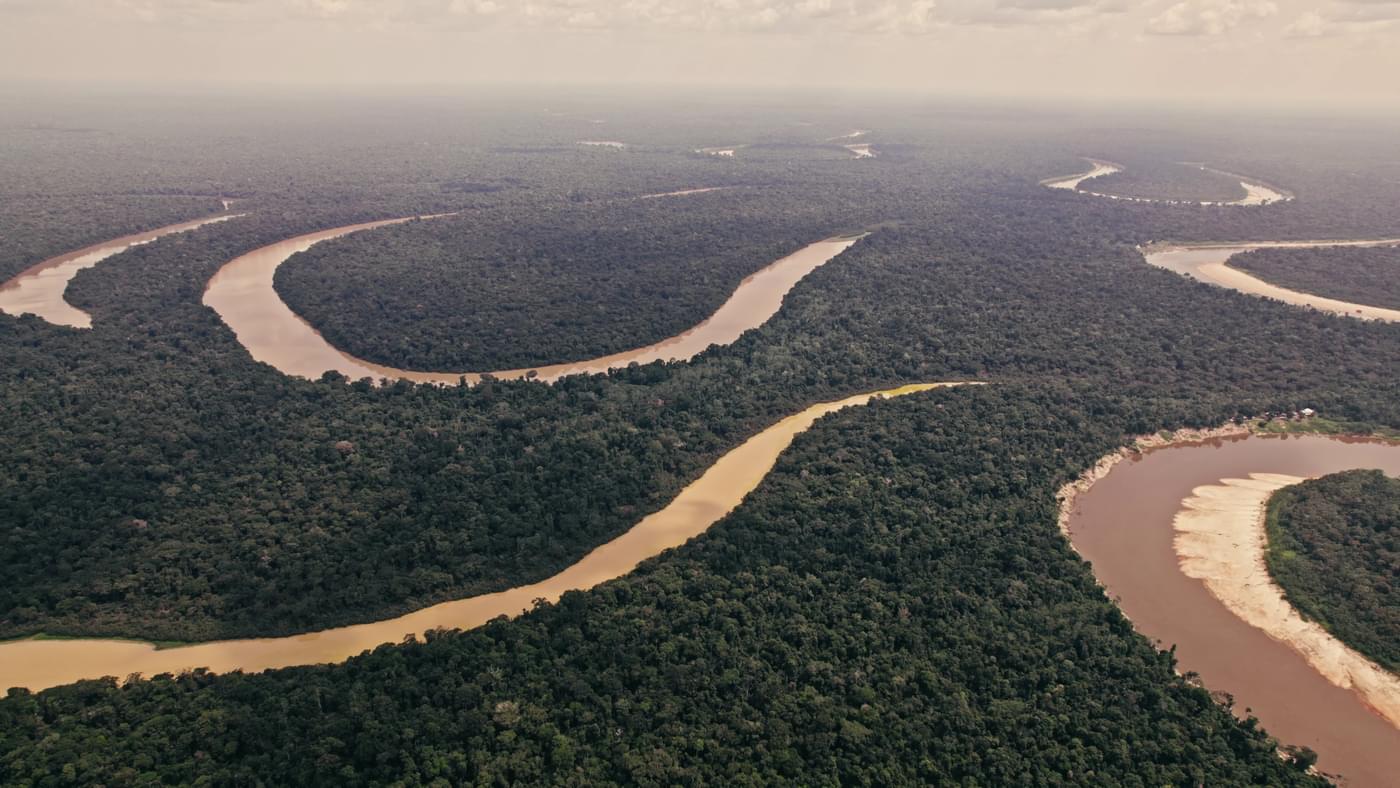 An aerial view of the Javari Valley in the upper Amazon basin in Brazil. (Photo: TV Globo/Globoplay)
An aerial view of the Javari Valley in the upper Amazon basin in Brazil. (Photo: TV Globo/Globoplay)
The two men had been traveling for several days when they set out in a patrol boat with Pereira’s Univaja colleagues early on June 4, 2022. According to the indictment against three of their alleged killers, the boat was making its way down the Itaquai River when they encountered illegal fisherman Amarildo Costa de Oliveira, also known as “Pelado.”
Univaja had previously sent two letters of complaint to authorities about Pelado, describing him as a senior figure in a group of fishermen who invaded indigenous territory at night and linking him to multiple gun attacks. Pelado was never charged, however, and it is not clear if he was investigated.
“Pelado wanted to be the boss, he wanted to rule over that area,” his uncle, Raimundo Bento da Costa, told the Guardian.
Pelado had threatened Pereira and his colleagues when they had found him fishing in protected waters before, according to the indictment. As the Univaja patrol team tried to approach Pelado and two men he was with on that day, they responded by raising their guns in warning.
That encounter did not turn violent. But when Pelado noticed Pereira and Phillips taking pictures of his boat the following morning, prosecutors say it was the last straw.
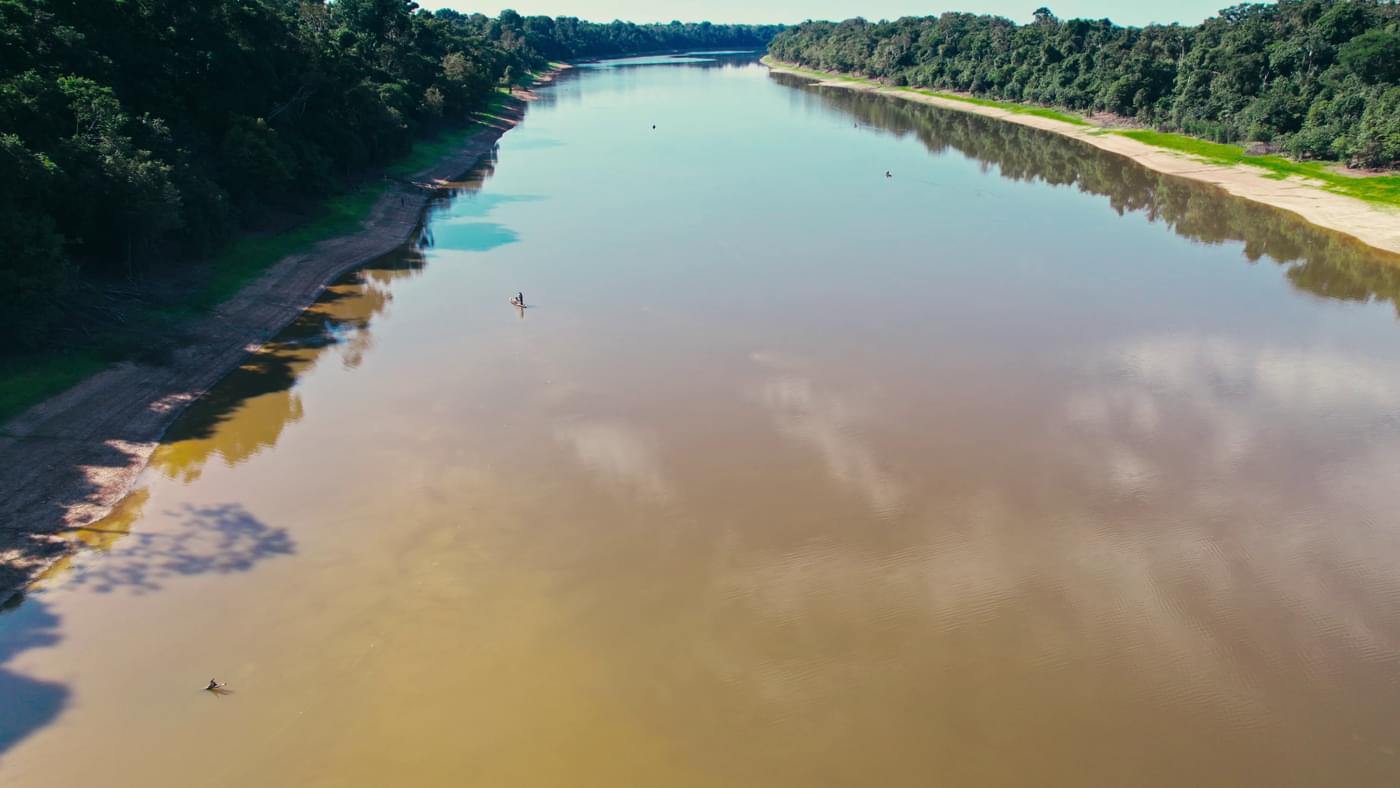 The Itaquai River in the Amazon’s Javari Valley. (Photo: TV Globo/Globoplay)
The Itaquai River in the Amazon’s Javari Valley. (Photo: TV Globo/Globoplay)
According to the indictment, Pelado allegedly called up another fisherman named Jefferson da Silva Lima and set out in pursuit of Phillips and Pereira. The fishermen soon caught up to the pair and opened fire, killing them both, the indictment said.
Pelado and Lima then allegedly threw Phillips and Pereira’s bodies in the water, before returning later to burn and dismember them. Another local fisherman, Oseney da Costa de Oliveira, has also been charged with helping them.
Eliesio Marubo, a lawyer for Univaja, said Pereira was killed because he wouldn’t look the other way when it came to protecting the rainforest. “Bruno was seen as an obstacle to the traffickers and his environmental protections as a barrier,” he said.
All three of the fishermen are in custody awaiting trial for the murders. Two of them, Pelado and Lima, had reportedly confessed to the killings and led investigators to Phillips’ and Pereira’s remains. But their lawyers told reporters the confessions were obtained “under torture,” and they have since recanted.
One of the lawyers, Goreth Campos Rubim, denied the police’s version of events, telling reporters it was Pereira who had opened fire and Pelado had shot back in self-defense. Pelado has said the same during court hearings.
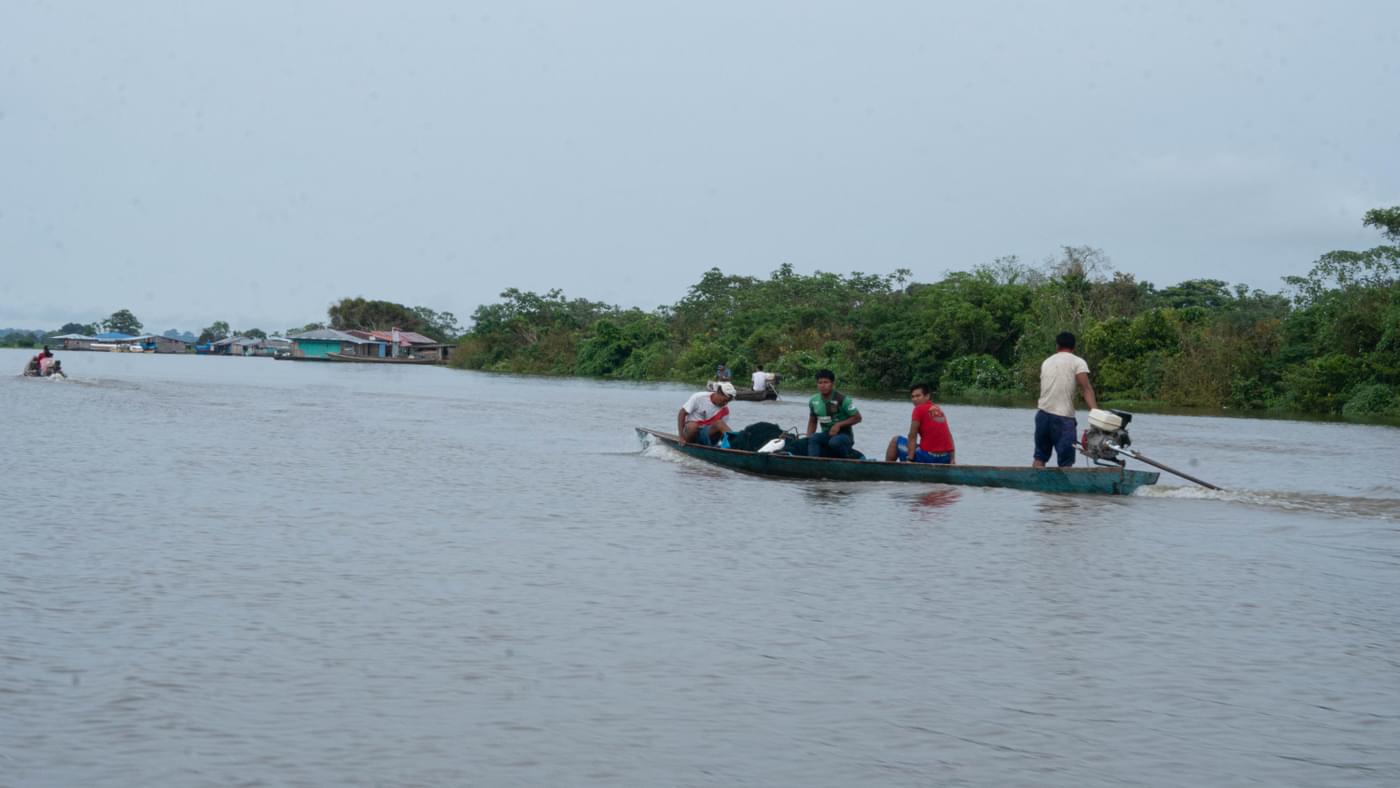 Fishermen on a lake in the Javari Valley. (Photo: Alex Rufino/OJO PUBLICO)
Fishermen on a lake in the Javari Valley. (Photo: Alex Rufino/OJO PUBLICO)
Over the weekend, Colômbia was reportedly charged with ordering the murders of Phillips and Pereira and the concealment of their bodies. One of his alleged henchmen was also charged with assisting him, according to media reports.
Colômbia has denied all involvement in the killing in comments to the media. His lawyer declined to comment for this story.
In evidence submitted after the original indictment, the prosecutor argued Colômbia was the leader of the organized crime group to which Pelado belonged. Citing witness testimony, the prosecutor said Colômbia financed much of the illegal fishing in the area, including providing the boats allegedly used in the murders of Pereira and Phillips.
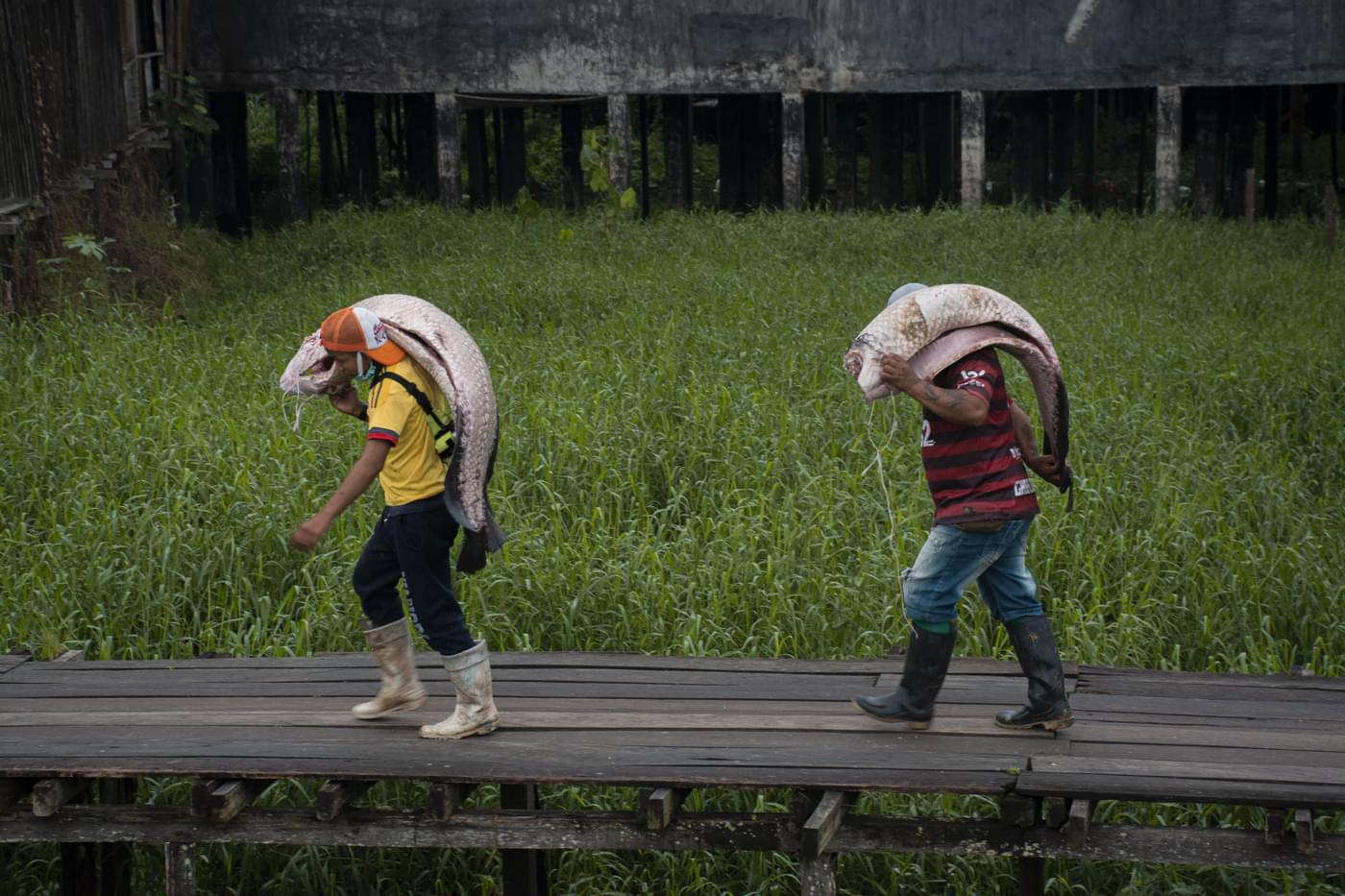 In Letícia, Colombia, two men transport decapitated pirarucu fish. (Photo: Alex Rufino/OJO PUBLICO)
In Letícia, Colombia, two men transport decapitated pirarucu fish. (Photo: Alex Rufino/OJO PUBLICO)
The former superintendent of the Amazonas police said there were “strong indications” that Colômbia had planned the killings.
In a report from March 2022, three months before Phillips and Pereira were killed, Univaja described Colômbia as the biggest buyer of fish in the area and the “sponsor of the invasions into indigenous territory.”
A Hotbed of Fishing Disputes
The Javari Valley has become increasingly dangerous in recent years as territorial disputes between indigenous communities and fishermen have grown more severe.
Raimundo Pinheiro, a 51-year-old fisherman from Atalaia do Norte, has spent his whole life fishing the rivers of western Brazil. He remembers a time when the local fishermen worked in harmony with indigenous communities.
That changed after 2001, when the indigenous territories were demarcated and fishermen were confined to only a small zone. Today Pinheiro said he can barely catch enough to pay for equipment, gas, and the other costs for each trip.
“The situation is growing more and more difficult. The [authorized] fishing zone is already small, and they want to shrink it more,” he said. “How are we going to live?”
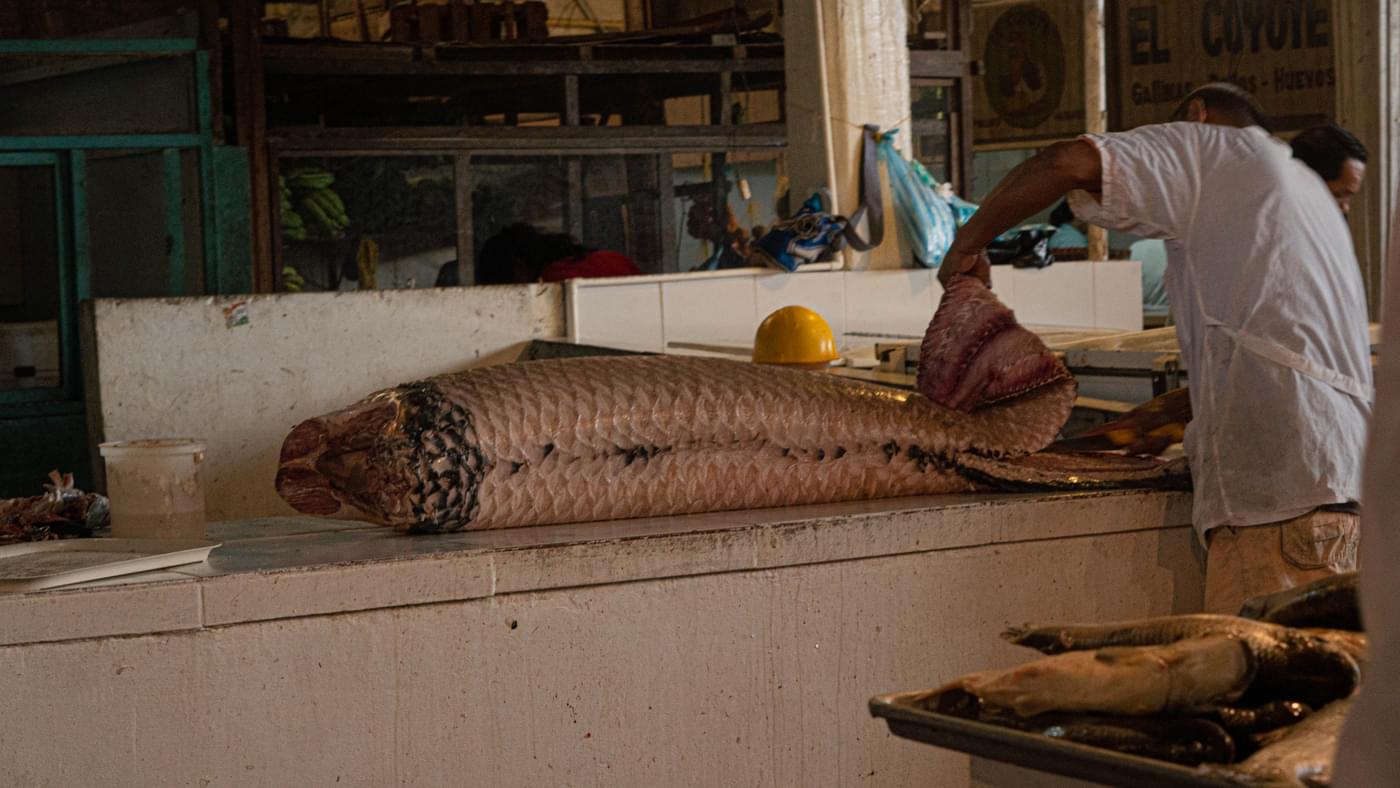 A pirarucu fish seller in Leticia market in Colombia. (Photo: Alex Rufino/OJO PUBLICO)
A pirarucu fish seller in Leticia market in Colombia. (Photo: Alex Rufino/OJO PUBLICO)
In the year through November 2019, an unprecedented eight gun attacks were recorded at the checkpoint to enter indigenous land. The National Foundation of Indigenous Peoples, a government agency known as Funai, said illegal hunters and fishermen carried out the attacks.
Fishing is forbidden in the valley because it is indigenous land, which is protected under Brazil’s constitution. Some species found in the area such as pirarucu — the largest fish in South America, which can reach 200 kilograms and three meters in length — are also protected by federal law.
“The ‘demarcated’ land belongs exclusively to the indigenous people. If you remove a stone in this area, you are committing a constitutional crime,” Pereira’s former colleague, Armando Soares, told Forbidden Stories.
But overexploitation in the areas where fishing is allowed means yields have dropped dramatically. Some now cross the porous zone where Brazil, Colombia, and Peru meet to find fish or sell their catch: fresh pirarucu from Brazil are sold in Colombia, while salted ones tend to go to Peru.
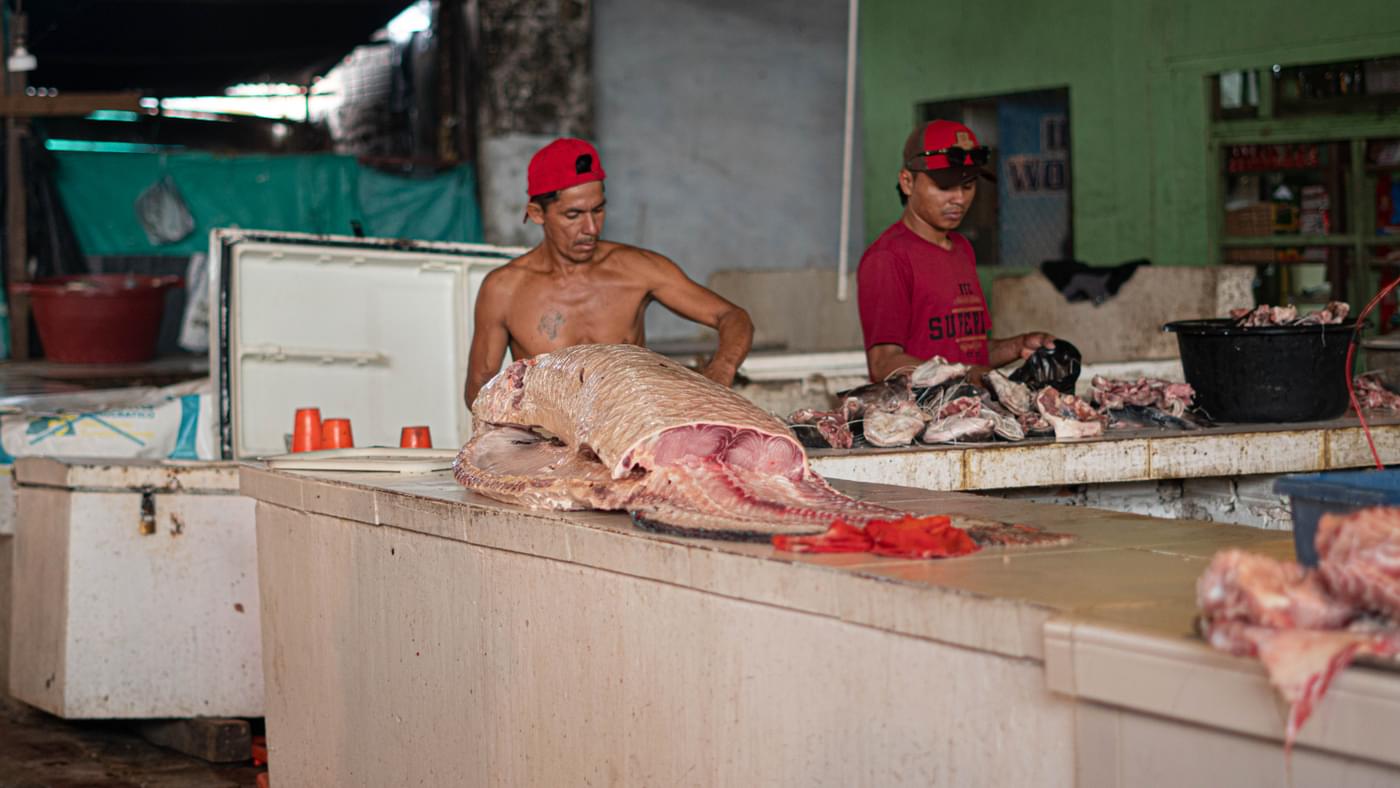 Pirarucu fish being sold in Leticia market, in Colombia. (Photo: Alex Rufino/OJO PUBLICO)
Pirarucu fish being sold in Leticia market, in Colombia. (Photo: Alex Rufino/OJO PUBLICO)
Juan, a fisherman from the Peruvian side of the Javari River who said he sometimes spends as much as 15 days at a time illegally fishing Brazil's waters.
“If I had a legal option, I would take it,” he said. “But I did not go to school. I’ve worked since I was a kid. I have three children.”
Brazil’s environmental investigation agency, IBAMA, told reporters it carried out 101 seizures of pirarucu between August 2003 and last September, around 80 percent in the state of Amazonas. Separately, the state’s military police said they seized almost 114 tons of pirarucu between 2019 and September 2022.
Experts say much of the illegal fishing industry in the Javari Valley is now run by organized crime gangs. A commission from Brazil’s Chamber of Deputies, tasked with investigating Phillips and Pereira’s murders, said these groups use fishing as a cover for other crimes.
“There is no doubt that the murders of Bruno and Dom are part of a much larger criminal context. There are clearly groups that not only finance illegal fishing but also use it to launder money and traffic drugs,” the commission wrote in a November 2022 report.
Alexandre Saraiva, a former senior police chief in the Amazon, said investigators would often find cocaine hidden in cargoes of illegally caught fish.
"Criminal organizations have no prejudice when it comes to making money,” he told OCCRP.

